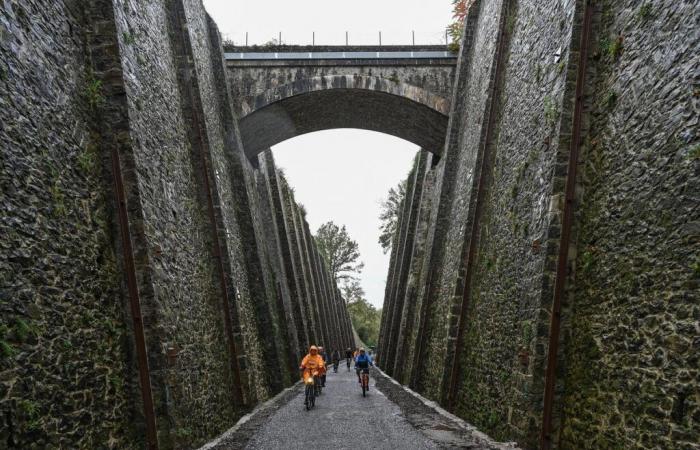An itinerary in the heart of the territory
EuroVélo 3, also called “the Scandibérique”, extends from Norway to Spain, and crosses the Pyrénées-Atlantiques via Urt, Saint-Palais and Saint-Jean-Pied-de-Port before joining the Spain. In this region, the cycle route partly follows the route of the old railway line – Puyoô-Salies-Saint-Palais – and connects rural communities, strengthening the links between them and offering a cycle route of tourist and daily interest. Accessible from the SNCF stations of Bayonne, Urt and Saint-Jean-Pied-de-Port, these secure routes meet the expectations of residents and travelers.
The editorial team advises you
The Department has also developed an infrastructure that ensures comfort and safety, with 120 km of cycle routes including 50 km of greenways. These greenways, 33 km of which are already available, are designed for pleasant journeys, far from heavy traffic, suitable for family walks and occasional cyclists.
Rehabilitation and shared financing
The Arbouet-Sussaute trench, a remarkable work of art, has been renovated to allow the passage of cyclists in complete safety. This rehabilitation work includes the consolidation of the retaining walls, the installation of a rainwater drainage system, and the cleaning of the gutters to guarantee a functional and pleasant greenway.
The editorial team advises you
With a total cost of 1,177,000 euros excluding tax, this project was financed through cooperation between the Department, the Region, the State and the European Union. The Nouvelle-Aquitaine Region thus contributed 314,600 euros, while FEDER funds from Europe provided 456,000 euros and the State 327,560 euros, supplemented by departmental funding of 421,840 euros.
EuroVélo 3 aims to strengthen the region's tourist potential by allowing a more intimate discovery of the territory by bike. With this new section, visitors will be able to explore preserved landscapes, discover historic villages and enjoy getaways offered by the Basque Country Tourist Office. In 2025 and 2026, other extensions are planned, in particular with the rehabilitation of the Pont de Heras and a new axis linking Sauveterre-de-Béarn.
A lasting impact on the territory
This soft mobility project is part of a broader framework of heritage promotion and economic development for the Pyrénées-Atlantiques. The community, which has been developing the cycling strategy since 2010, recalled investing massively in infrastructure for cyclists, with nearly 2,000 km of developed routes.
Jean-Jacques Lasserre, president of the Departmental Council, recalls that this symbolic section is part of a broader policy of sustainable mobility. “Tens of millions of euros have been committed, and the route here follows the old railway line, offering an example of heritage reconversion for the benefit of the public. This commitment from our community finds meaning at a time when many citizens are turning to cycling, for their commute to work as well as for their vacations. »






